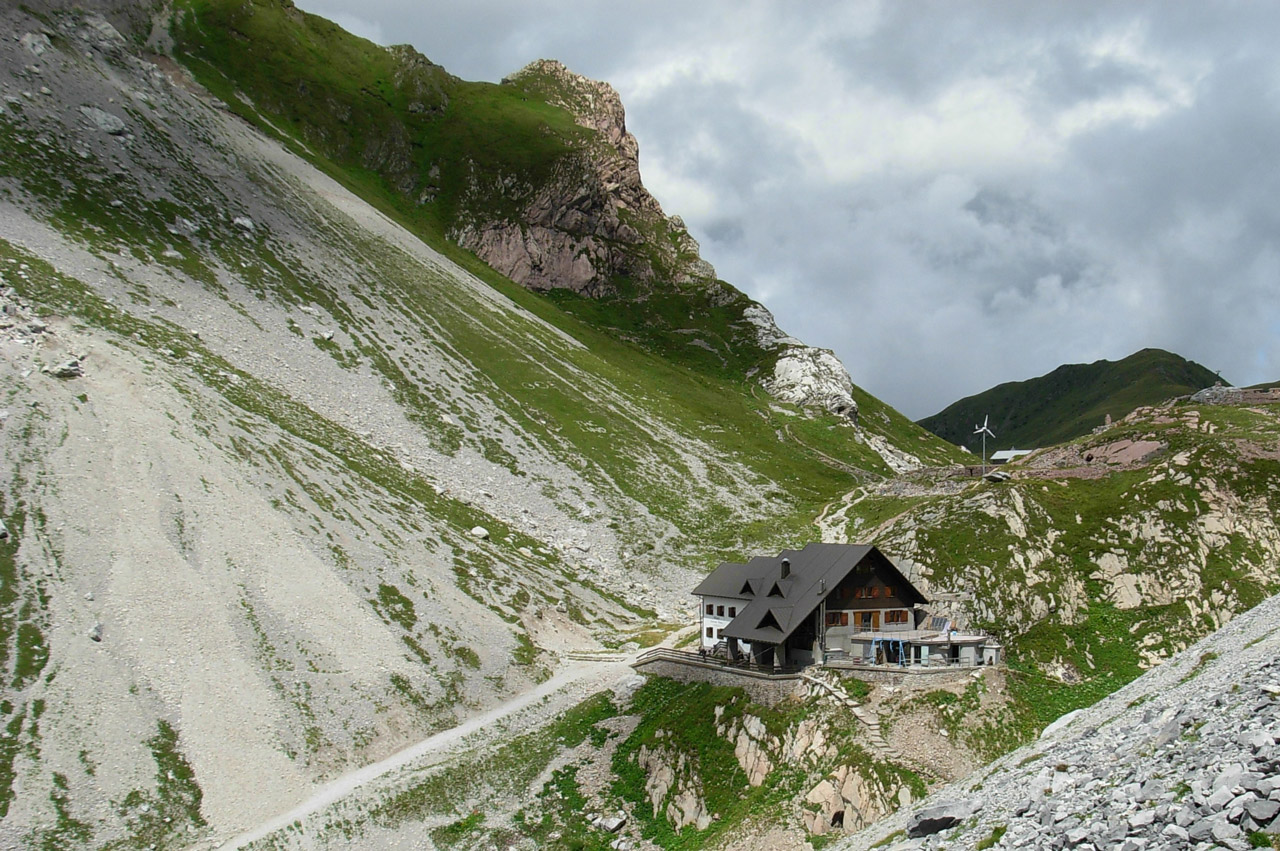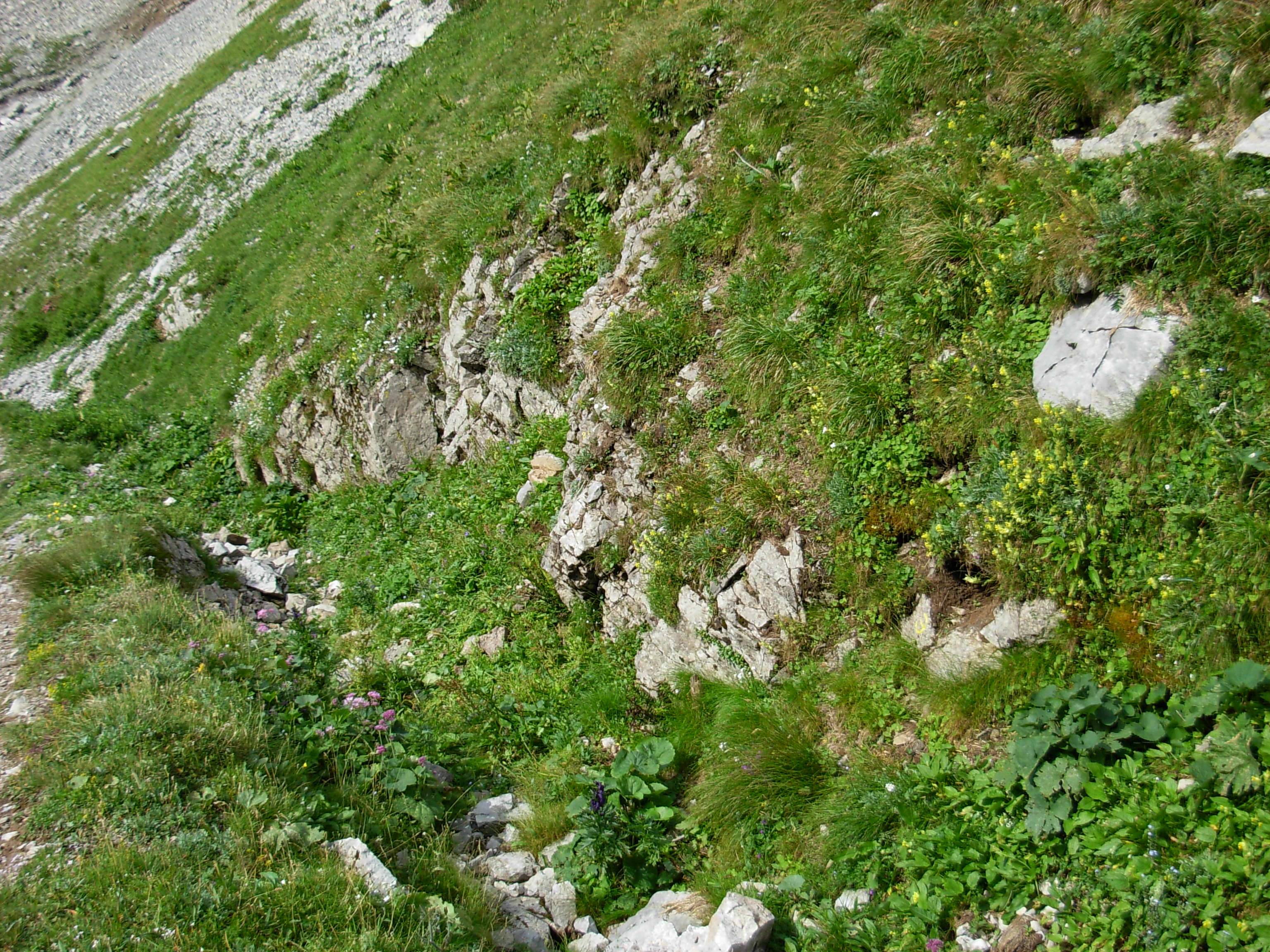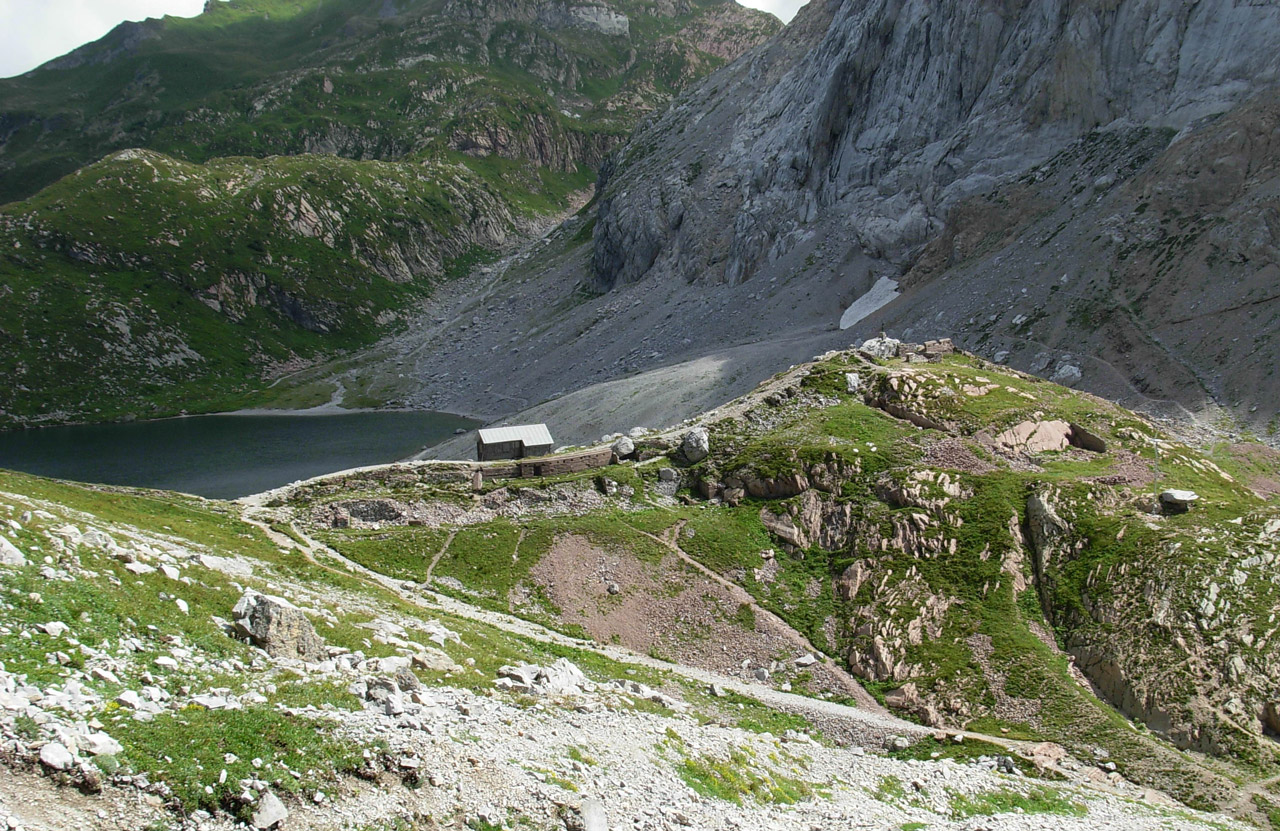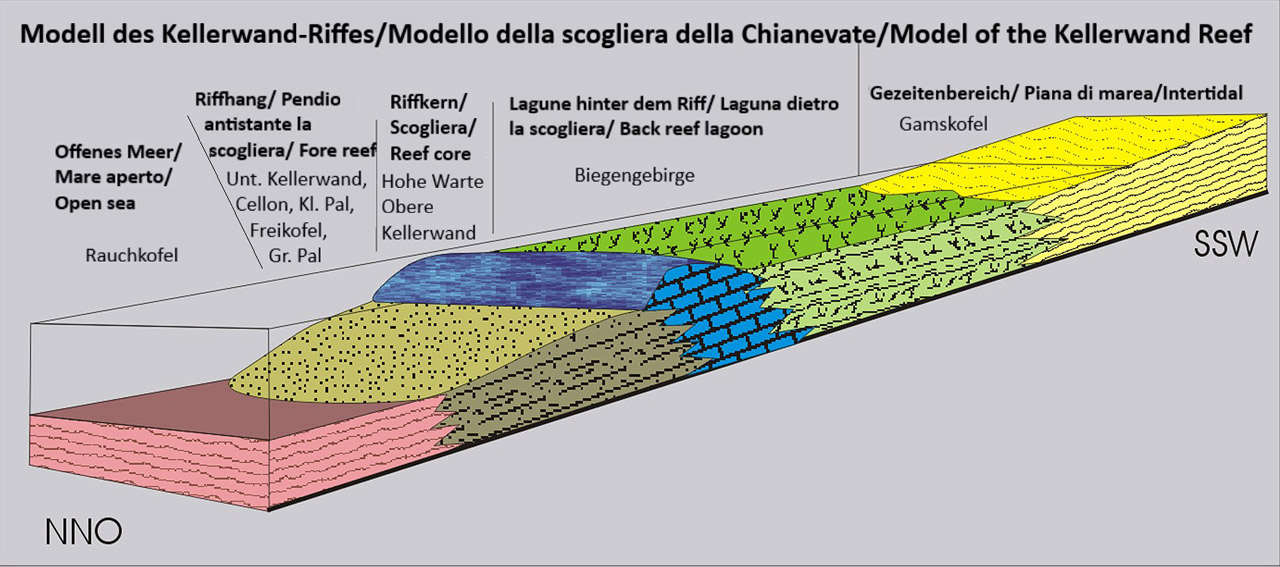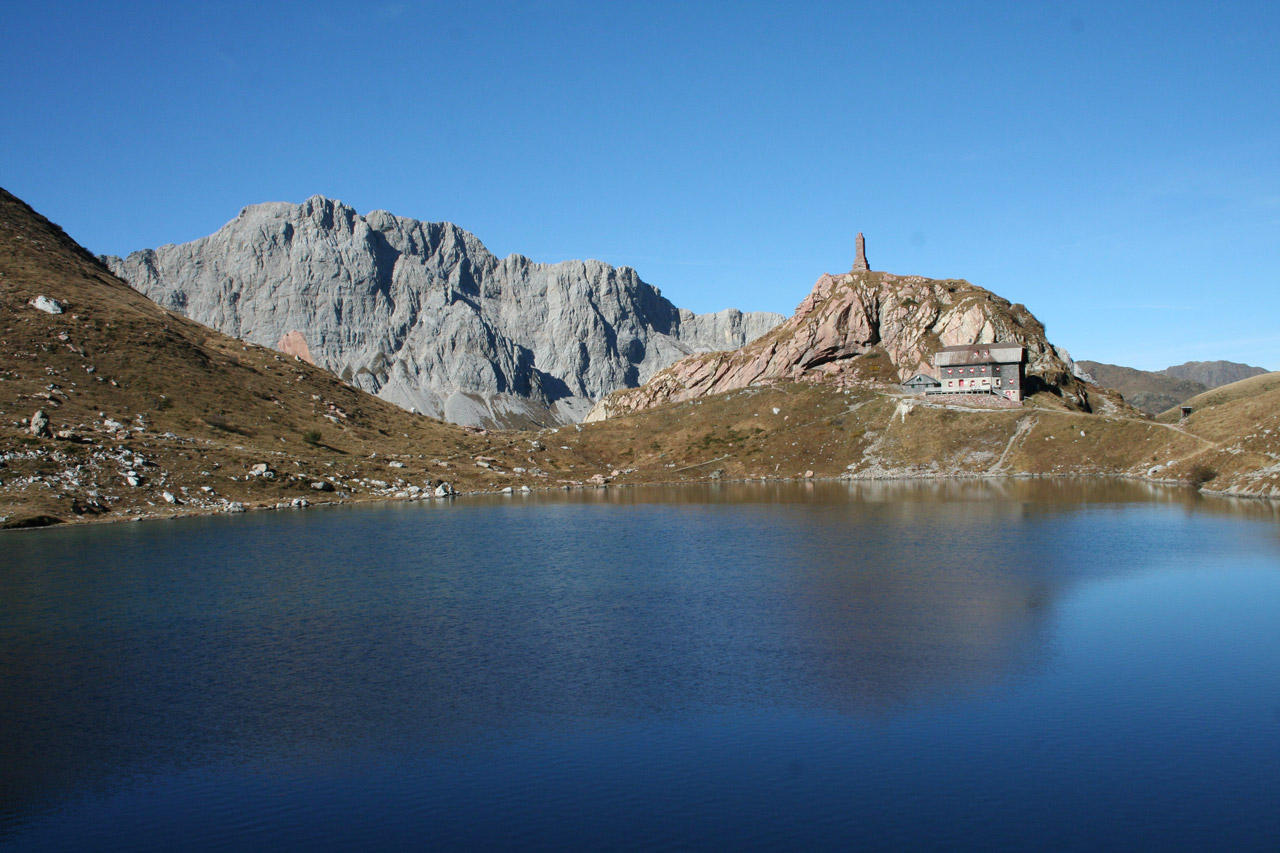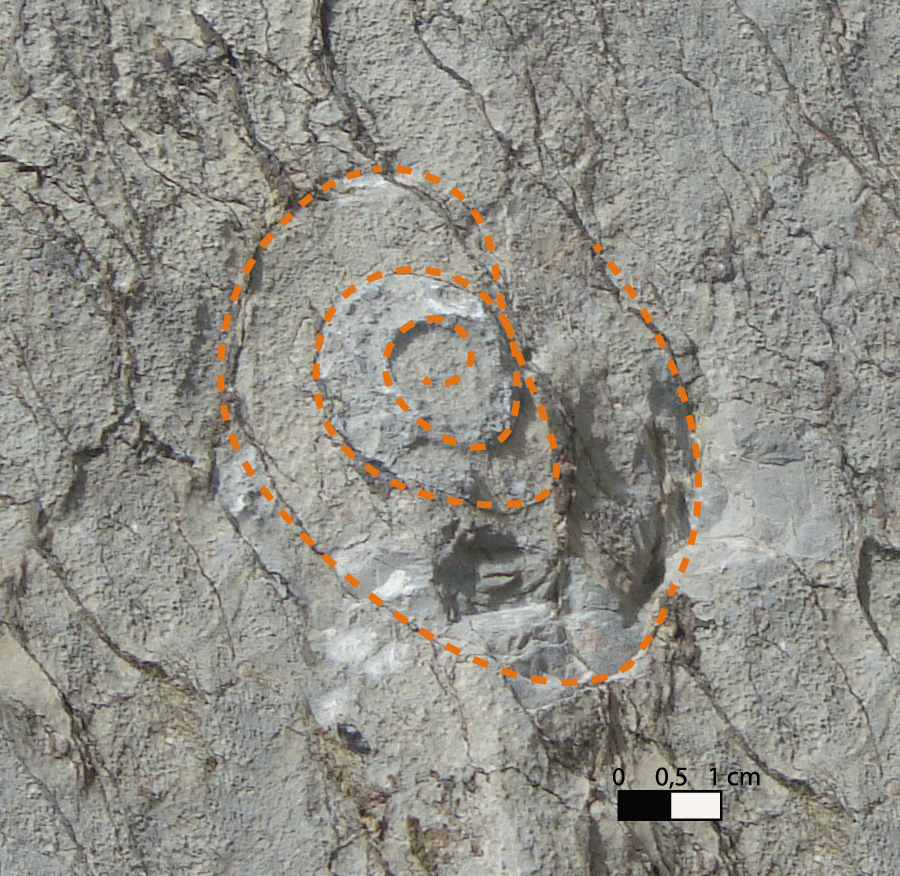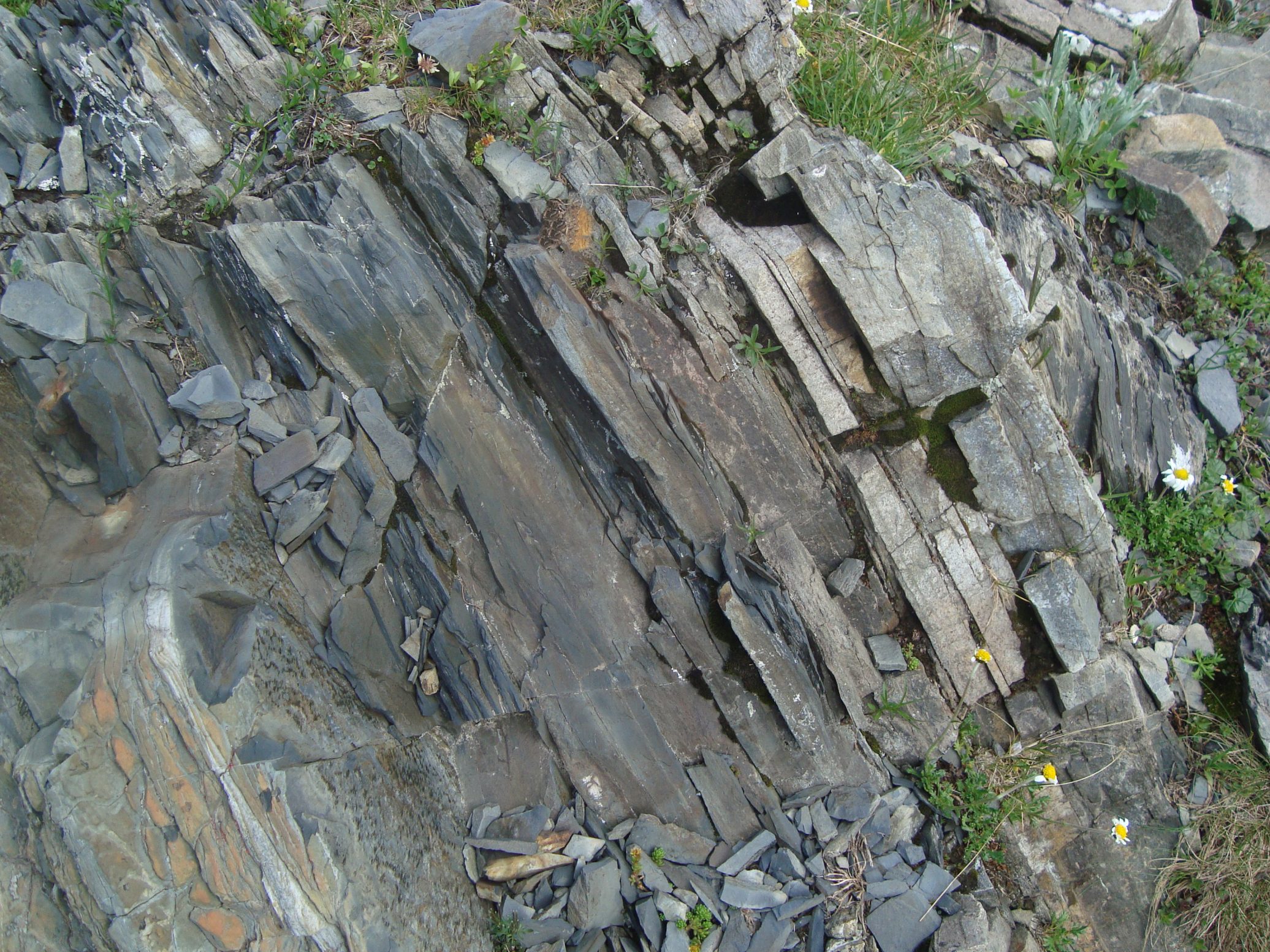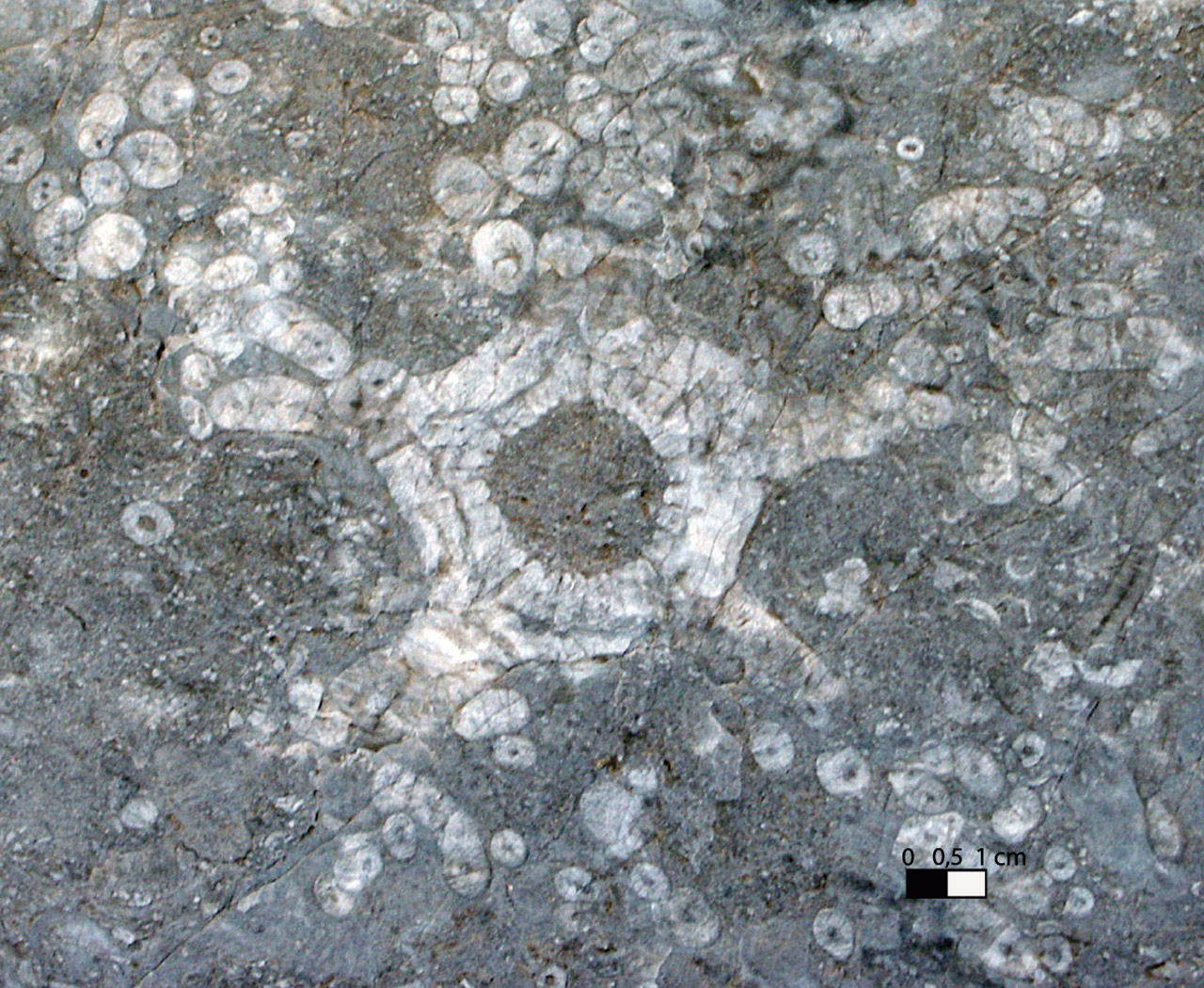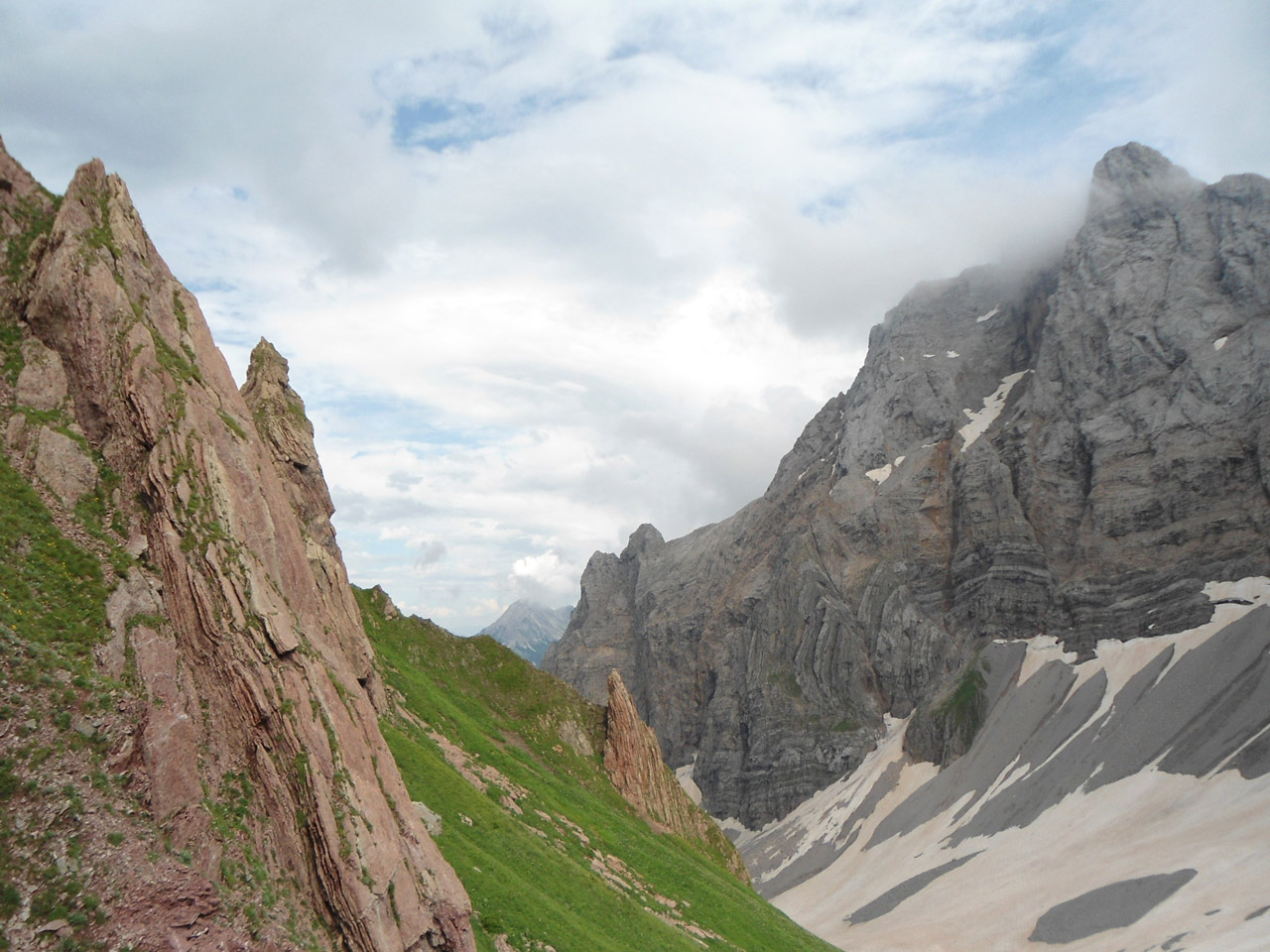The Wolayer Valley separates in the East two entirely different realms of rocks. The bright limestone of the Kellerwand in the south formed some 400 million years ago in a shallow sea. In contrast, the colourful sandstone, the shale and the limestone of the Rauchkofel slopes in the north deposited …
Read more World-renowned geology at a glance
Looking north, you can see the Lambertenghi Ridge, the ridge west of the Volaia pass that connects to the north-east corner of Mount Capolago. It represents, in some ways, a synthesis of the geological makeup of the Volaia area. A thrust fault connects two different sedimentary sequences: one is made …
Read more The Lambertenghi Ridge
The RFL III section is an outcrop of about twenty meters highlighted by a trench dug during the First World War. It is located in the basin south of the Refuge Lambertenghi-Romanin, about a hundred meters further downstream, near the path that leads to Mount Capolago. The grey limestones that …
Read more A boundary between two periods: the RLF III section
The Wolayer Pass is the saddle that separates the imposing limestone cliffs of Mount Capolago/Seekopf to the west from those of Cima Lastrons del Lago/Seewarte und Coglians/Hohe Warte to the east. It owes its origins to an important tectonic line north-south, a fault that cuts the cliff deposits, remains of …
Read more A complex structure
In the Devonian period (from 420 to 360 million years ago), a shallow and warm sea, rich in coral reefs, stretched where today we see the Carnic Alps. The curren area of the Wolayer Lake was the central body of the coral reef and its lagoon. The lagoon deposits are …
Read more The era of coral reefs
Wolayer Lake is the result of the last ice age, the Würm glaciation, which began about 115.000 years ago. At the time, the glacier had dug the basin and then whelmed the Wolayer Pass with ice. After the ice retreat, around 10.000 years ago, the basin was filled with water, …
Read more Wolayer Lake – At the heart of marine deposits
Arrived to this point, we can clearly distinguish spiral-shaped fossils in the rocks: they are Goniatites dating back to the Devonian period, about 370 million years ago. These are the extinct ancestors of Ammonites. The remains of Conodonts’ teeth, unfortunately not visible to the naked eye, are geologically much more …
Read more Find beauty in the small things
From this point, you can see rocks that, with their 330 million years of age, are the youngest in the whole Geotrail. The rocks of the Hochwipfel Formation were formed during the Variscan Orogeny, due to the tectonic movements that caused submarine landslides, with the consequent accumulation of sediments carried …
Read more Lifeless rocks tell of hostile times
This limestone rock comes from Mount Creta Chianevate. It is rich in Crinoids from 380 million years ago. Although their appearance makes them look like flowers, they are actually animals (Echinoderms, related to sea urchins and starfish) that lived anchored to the seabed thanks to a peduncle with roots. At …
Read more “Bestial” flowers and other mysterious forms of life
The mighty ramparts of Creta della Chianevate (2769 m. asl) and of Mount Coglians (2780 m asl) are the highest peaks of the Carnic Alps. The southernmost glacier of Austria, the Eiskar, is here as well. The Chianevate formed in the Devonian (415-360 million years ago), over a time span …
Read more The most impressive peaks


